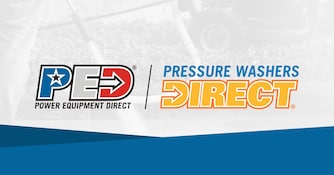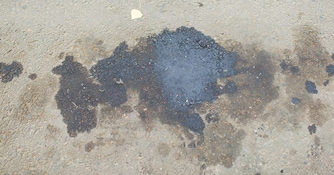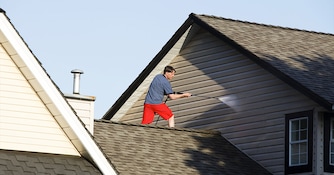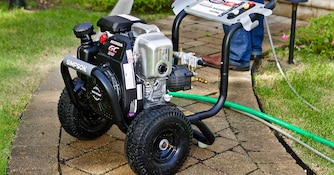
Deep Cleaning with Detergent and Soap
Cleaning twice as hard won't matter if you aren't using the right supplies for the task.
When pressure washing alone doesn't do the trick, detergents make it twice as easy to remove tough dirt and stains. Detergents and soaps will work the tough stuff loose so your pressure washer can clear everything away for a clean, new look.
There are various types of cleaning detergents that are designed for specific tasks, but make sure you only use pressure washer detergents, and never anything that contains bleach, as bleach will damage your pressure washer.
Concentrated Vs Ready-To-Use Detergent
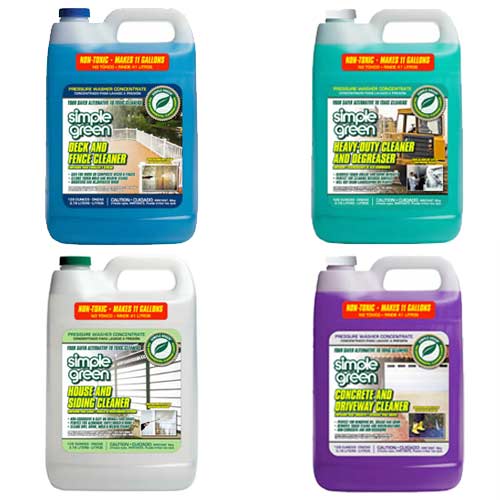
You can get detergents that are concentrated or ready to use based on your intended use. Ready-to-use detergents can be added directly to your detergent tank as-is, and concentrated detergents need to be mixed with the appropriate amount of water to get a proper ratio.
If you don't use detergent often, it might be beneficial to buy the ready-to-use detergent so you can use it out of the container immediately and not worry about mixing the proper ratios in a separate bucket/tank.
Types of Detergents by Application
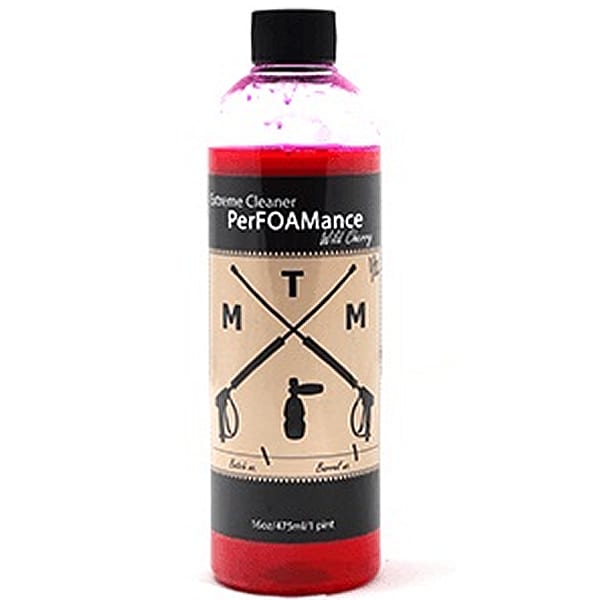
Different surfaces require different detergents. You'll need to choose a type of detergent that is made specifically for your application.
For example, when you're cleaning concrete, you'll use a specific concrete detergent that can remove deep-down oil stains from your garage or driveway. If you use the same detergent on your car, you could strip the paint off, too.
Vehicle detergents aren't all treated the same. There are specific detergents for boats, others for cars, and specially formulated detergents for motorcycles and RVs. The dirt, road salt, and dead bugs you remove from your car or truck will need different treatment than the water and algae deposits you clean off of your boat. And the exposed components on your motorcycle may require a different solution than the decals and compartments on the outside of your RV.
House cleaning detergents are specially formulated to remove deeply embedded dirt from your siding without damaging it or fading its color. However, when you're cleaning a deck or fence, you'll want to use deck & fence detergent designed specifically for those surfaces, removing dirt and grass stains from the wood.
But there are more general-purpose detergents that will work on multiple surfaces. They aren't designed to work as well for specific applications, but you can get degreaser detergents, general-purpose detergents, and full soap kits that include different types for different applications to save you from buying them individually.
We recommend using detergents that are specifically designed for each application for the best results, but a general-purpose cleaner is good to have on hand for large cleaning jobs when you don't want to be changing detergents frequently.
How to Clean Using Detergent
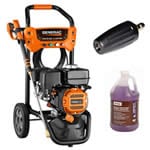
Most pressure washers today feature onboard detergent tanks. Pressure washer soap dispensers make cleaning much easier as you can move your pressure washer around without worrying about moving a bucket. Some, however, will not have these tanks and will require the use of a bucket to insert your detergent hose into.
After you've filled your detergent tank, make sure the valve is turned to "On" so the detergent will be applied as you spray. Switch to a low-pressure detergent nozzle, as high-pressure nozzles will not work with detergent. Spray in an upward motion with your detergent to prevent streaking, and overlap each pass slightly to ensure you don't leave anything untreated.
Once you're finished applying your detergent, allow it to do its magic for about 5-10 minutes. However, don't allow it to dry. On hot, sunny, or windy days, you may have to reapply detergent after a few minutes to make sure it's not drying onto the surface.
Once the soap has had time to loosen the dirt and stains, switch your detergent tank valve to "Off" and squeeze your sprayer nozzle trigger to flush the remaining detergent out of the line. Change your nozzle to a higher-pressure nozzle that's appropriate for what you're cleaning.
Clean the detergent and grime away from top to bottom to ensure it's fully rinsed clean, then gently spray the surrounding area to clean the soap off of the foliage and further dilute the remaining detergent so it doesn't damage your plants.
Sanitizers, Disinfectants, and Other Chemicals
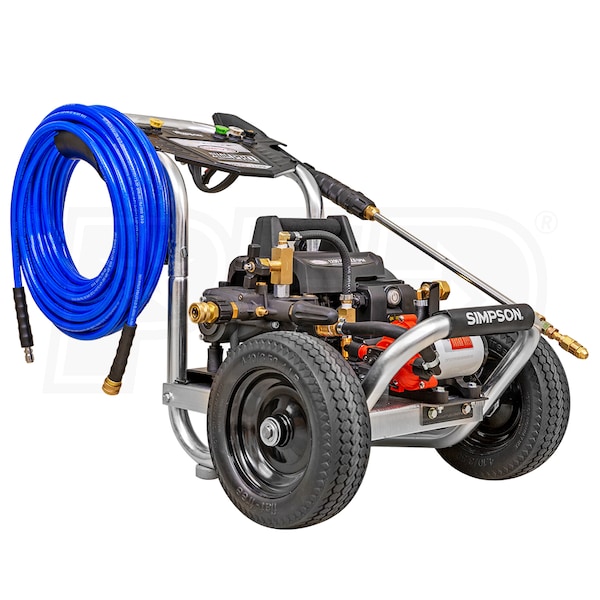 When soap or detergent just doesn't cut it, chemical injectors and more powerful sanitizing solutions could be what you need. These types of cleaning solutions are designed to kill most bacteria and other organisms when needed.
When soap or detergent just doesn't cut it, chemical injectors and more powerful sanitizing solutions could be what you need. These types of cleaning solutions are designed to kill most bacteria and other organisms when needed.


